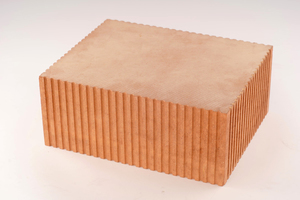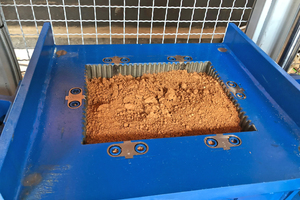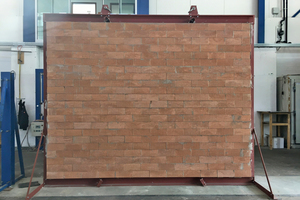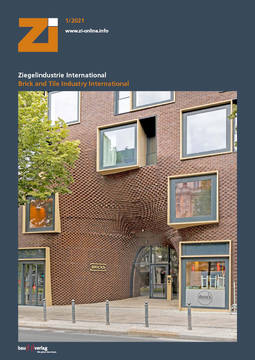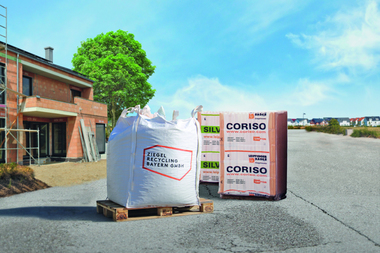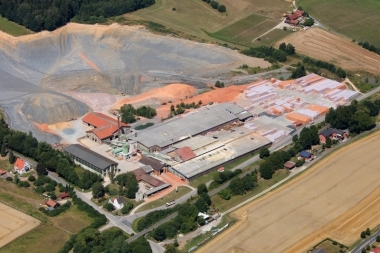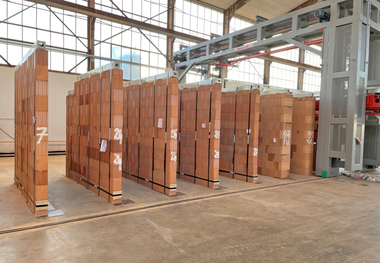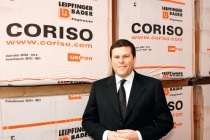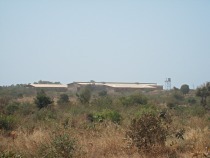First solid brick made of recycled material for interior walls
A brick that isn’t fired and uses hardly any new resources? This idea has so far seemed impossible. However, as part of its research project on “cold bricks”, Leipfinger-Bader brickworks has now laid the foundation stone for a new generation of masonry bricks. “Goal of our research was to develop a masonry brick with high density and compressive strength that meets the requirements of load-bearing interior walls. We have succeeded in doing this,” explains Thomas Bader, head of the company.
Reporting to be the first manufacturer of this brick, Leipfinger-Bader presented the solid brick that dries in air. A milestone in masonry construction, as Thomas Bader explains: “Important aspect of our now concluded research project was the development of a wall construction material that did not have to be fired and therefore only requires a low energy input. On top of this, it was to consist of recycled brick materials.”
The road to the unfired masonry brick
To realize this idea, the Bavarian company needed qualified cooperation partners. First talks with the Osnabrück-based mortar and render specialist Sievert Baustoffe – which used to operate as the quick-mix Group – were initiated back in 2015. Together, the partners submitted a project application at Bavarian Ministry of Economic Affairs and Media, Energy and Technology. Under the project title Cold Bricks – a Recycled Functional Material, the research work started in August 2016. From the beginning, researchers from rent a scientist took part in the projects. Commissioned by Leipfinger-Bader, they worked out theoretical principles, took over large parts of the project organization and conducted series of practical tests.
The first step on the road to success was the preparation of the starting materials. The basis was unmixed brick waste in especially fine particle sizes as is regularly produced during the grinding of high-precision bricks. Besides this, fractions of recycled brick rubble can be used, too. This is supplied by the unique recycling plant at Leipfinger-Bader, which has been in operation at the Puttenhausen site in Bavaria since September 2020. This brick sand is mixed with a special binder formula, here an entire set of formulations could be developed. The various material combinations can be used in the long term for different products.
Pressed into the mould and air dried
In a second step, series of tests were conducted with small specimens. Only at this point was the decision taken to adopt a specific manufacturing method to produce products in the original size. For test purposes, an installation from Knauer Engineering (Geretsried) was converted and set up at the Vatersdorf site. With this, an innovative moulding process was developed. The moulded solid bricks are then dried in air at ambient temperature, a firing process is not necessary. The result is a wall construction material that has an especially high density and a correspondingly high compressive strength. Thanks to its mass, it not only meets the structural preconditions for load-bearing interior walls, but also their special sound insulation requirements. As a conventional high-precision unit, it can be installed with a thin-bed method. Independent test institutes have confirmed the suitability of the cold-produced solid bricks for interior walls in structural tests. The static parameters were checked by Kiwa Deutschland (Augsburg) while the Prüfzentrum für Bauelemente (PfB, Rosenheim) verified the high sound insulation. In the meantime, freeze-thaw resistance was examined by the Brick and Tile Research Institute (IZF, Essen). All testing methods returned positive results so that the project could be brought to a successful conclusion at the beginning of 2020.
All’s well that ends well?
The prototype of the solid brick is now standing in Thomas Bader’s office as a display model. The first coordination discussions with regard to licencing have already taken place. “We are at the beginning of a new generation of masonry bricks. To create our own production line, a new branch of business, however, has to be set up, “ he explains. Besides the technical equipment and facilities, large storage areas are needed for the materials. In addition, the logistics requirement is relatively high as large quantities of brick rubble have to be moved. Moreover, sophisticated quality control is necessary as only high-quality brick sand may be used in the finished product. Without investment support from the state, it will hardly be possible to meet this challenge. “We know how our interior wall solid brick can be produced in a resource-friendly and low-energy process. Now it is a matter of securing the financing and planning of series production with representatives from the relevant authorities,” says Thomas Bader.

